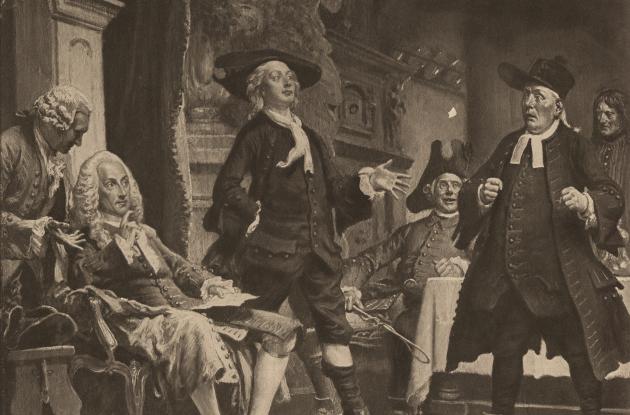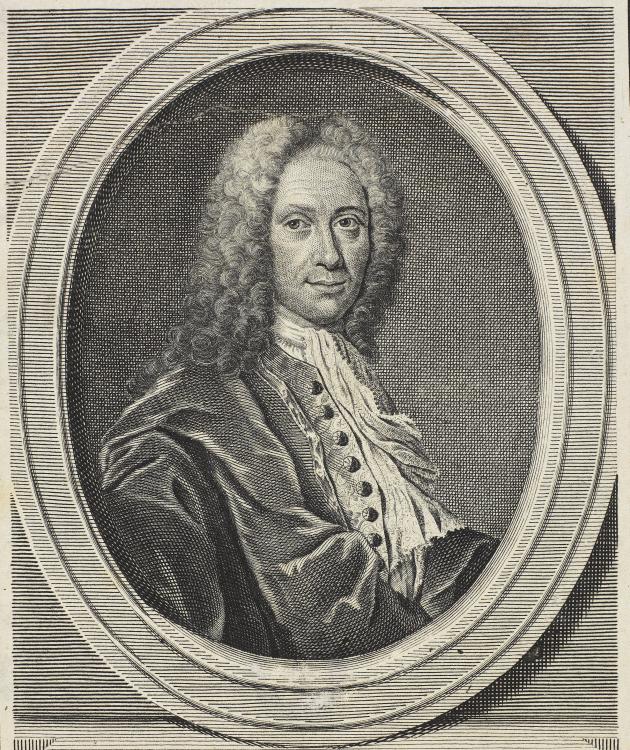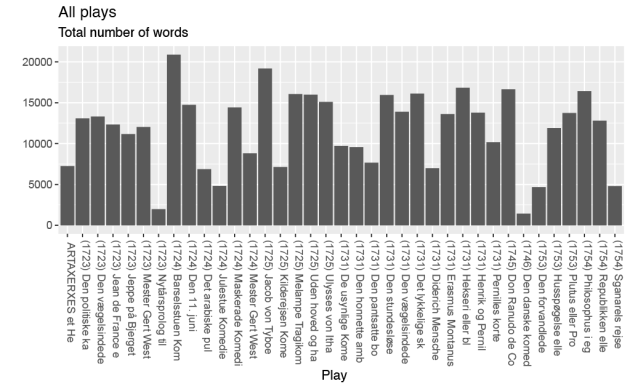New research translates Holberg's comedies into numbers and statistics
Pilot project examines Holberg's drama in a new way. With digital tools, the comedies are converted into numbers and statistics, which reveal patterns in Holberg's comedies.

Photo: Vilhelm Rosenstand
Published 01 September 2023 | Revision 09 January 2025
In the last decade, it has become more and more common for humanities studies to deal with numbers and statistics. Brought forward by the possibilities that the digitisation of source materials provides. For the past three years, the theatre researchers Ulla Kallenbach (University of Bergen), Anna Lawaetz (Royal Danish Library) and Annelis Kuhlmann (Aarhus University) and a number of programmers from the Royal Danish Library/Deic and Centre for Humanities Computing Aarhus worked on developing tools for digital analyses of Ludvig Holberg's drama, which are available at www.holbergsskrifter.dk. Here, Holberg's comedies are converted into statistics, figures and numbers with the aim of investigating how digital analysis can be used in a stage reading.
Women speak more often, men speak for a long time

Photo: Ukendt ophav
The research project is the first to investigate Danish-language drama, and it takes its starting point from the drama of the Danish-Norwegian writer Ludvig Holberg (1684-1754). Characteristic of Holberg's comedies is that they are closely related to the gallery of figures of the Italian mask comedy, where a number of characters with recognisable characteristics take part in several of the comedies.
A surprising pattern that the digital analyses reveal is the relationship between the sexes in Holberg's comedies. The analyses show that the sensible, energetic and charming maid Pernille has 3,634 lines across all of Holberg's comedies. This makes her the character who overall has the most lines in Holberg's writing. Her male counterpart, the waiter Henrik, has the second most lines with 2,068. In contrast, Henrik's lines have significantly more words. He has 42,073 words against Pernille's 28,088 words.
The figures tell something about the verbal presence of the characters, the rhythm of the comedies and, in this case, also about Holberg's at the time radical view of gender and equality. Holberg was an advocate of gender equality. This was expressed, among other things, in his comedies, where he had significant female roles, which in addition to Pernille include, for example, the lead role of Lucretia in Den vægelsindede.

Drama from a bird's eye view
The use of the digital analyses means that you can take in a bird's eye view of the entire oeuvre. You can see how Holberg constructed his drama and how he processed the different versions. Anna Lawaetz, who is responsible for the Theatre Collection, says:
"It is new to work with Holberg's drama in this way. In an international perspective, we also come up with new methodological suggestions on how to analyse drama, so that the different types of presence - including that which occurs between the audience and the performers - can be included".
In addition, with the code developed in the pilot project, you can create an overview of who is present in which scenes – something that both dramaturgs and production managers have so far made overviews of by hand.
The digital analyses must not only be used in analyses of Holberg's drama. Anna Lawaetz says: "We have started with Holberg, but the goal is that the methods and the code we develop can be widely applied to drama". The code will be ready for use by all interested parties during the autumn.
Read the research article
The first results from the pilot project have now been published in a research article in the international journal Orbis Litterarum. You can read the article here.
The project is financed by Aarhus University, DeiC and Royal Danish Library.
Danish drama for everyone
Research of Danish drama was made easier in the year 2022. This is when Royal Danish Library together with Danske Dramatikere via Copydan Tekst & Node entered into a new agreement, which means that you can now read unpublished Danish dramatic works digitally and have datasets delivered for research use through Royal Danish Library. Click here and read more about the agreement.